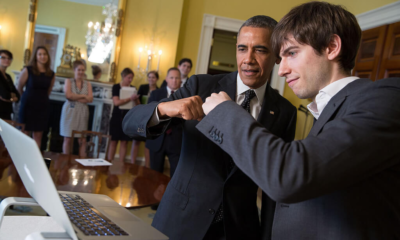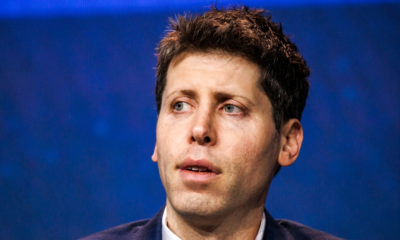Tech News
Can Technology Solve Our Transmission Problems? – Energy Institute Blog – Energy Institute at Haas
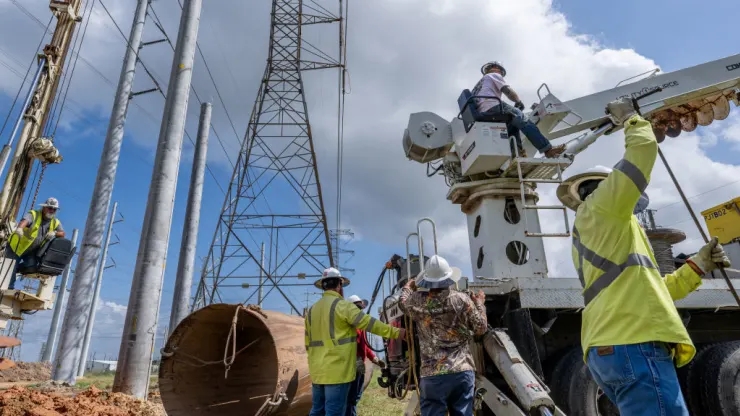
Energy Institute Blog
Research that Informs Business and Public Policy
Maybe, but we’ll need a little policy and alignment of incentives to make it work.
This week’s blog is co-authored with Emilia Chojkiewicz and Amol Phadke
The United States needs to up its transmission game. Last fall the US DOE issued a study indicating that a high electrification and renewables generation future needs at least a doubling of the regional transmission capacity we currently have – by 2035. But we aren’t building nearly fast enough to get there. We’ve been expanding transmission capacity at a rate of one percent per year in the last decade. The DOE study suggests we need something closer to 7 percent per year.
Meanwhile, by the start of 2023, developers had submitted applications to connect nearly 2,600 gigawatts of total generation and storage capacity to the grid, and those applications will sit in queues for years as transmission operators study what transmission upgrades, if any, are needed to accommodate new projects. There have been some heroic efforts on the part of FERC and transmission planners to help projects get out of these queues more quickly, but without much needed transmission upgrades, even if they get processed quickly, the huge majority of these projects will exit the queue through the failure door, rather than by getting built.
A technology solution?
It may seem that building new transmission capacity and clearing the interconnection queue isn’t so much a technology problem as it is a societal one. EI blogger Lucas Davis called this “Transmission Impossible,” and his paper with Catie Hausman and Nancy Rose talks about challenges stemming from fragmented utilities, cost allocation, and siting and permitting. But in Mission Impossible, Tom Cruise saves the day with exploding gum, metal-eating foam and voice changers. Can’t we invent fun technologies and gadgets to resolve our transmission woes?
It turns out that some of these technologies do exist – though they’re not exactly Hollywood movie stuff. They’re often put in a broad category of ideas called grid enhancing technologies, or GETs. Some GETs involve changes to how the grid is operated, like dynamic line ratings, power flow controllers, and switching lines in and out. However there’s one idea that involves upgrading transmission to permanently increase its capacity. It begins with the humble transmission wire, (a.k.a., a conductor).
For obvious reasons, we want our transmission wires to be low in resistance. Copper would be a natural material to use if that was all we cared about. But it turns out that copper can’t support its own weight very well. Instead, the technology of choice over the last century has been aluminum – lightweight, strong, with relatively low resistance – with a steel core for added strength. See the figure on the left below to get an idea of what this looks like.
But there’s a newer transmission technology that replaces that steel core with a composite, such as carbon fiber; see the figure on the right above. Composite cores are lighter and stronger, and that allows the conductor to use a different kind of aluminum with lower resistance. The real game changer with these advanced conductors is that they don’t sag as they get hot. That means they can handle more current flow – two times or more – than other technologies.
The opportunity
In the US, these advanced conductors have mainly been used in niche applications, like river crossings with long spans between towers. But in other parts of the world, most notably Belgium and the Netherlands, utilities have started taking their existing transmission rights of way, scrapping the old conductors, and replacing them en masse with these advanced conductors. This process takes a matter of months, can often be done with a maintenance permit, and once the substations they’re connected to are upgraded, it doubles the capacity of the line. Although advanced conductors cost more than conventional ones, increasing capacity in this way costs less than half as much as building a new line, because the advanced conductors avoid the need to get access to new land (right of way, or ROW) and build new towers. See the figure below.
Last December we and our co-authors published an EI working paper that asked the question: What if the US followed the lead of these other countries, and used advanced conductors in more than just niche applications? Could it make sense to reconductor much more than we are now?
The answer is a full-throated yes. Our results, which used a modified version of NREL’s ReEDS capacity expansion model, indicate that advanced reconductoring could save the US $85 billion on generation and transmission combined by 2035. Importantly, we found that reconductoring enables more spending on transmission (since it can be deployed faster than new rights of way), and access to lower cost generation (for example, by making cheap midwestern wind more accessible).
There must be a catch, right?
You may be wondering: if it makes so much sense, why aren’t we doing it already? Last month our colleagues at GridLab and Energy Innovation published a policy report that investigates this question.
Many of the barriers they identified echo Lucas’s barriers to conventional transmission expansion: Planning, permitting, institutions and incentives. But the scale of these problems is much more manageable than in the case of conventional transmission expansion. For example, a key planning barrier to advanced conductors is not having a workforce familiar with the technology. But as workforce development issues go, this one’s pretty easy to deal with. Advanced conductor manufacturers have outreach teams to train crews. Another example, related to permitting, is that environmental review can get triggered when companies want to reconductor, but that issue got resolved in a recent update to the National Environmental Policy Act.
The GridLab-Energy Innovation policy report also talked about policy solutions. Again, compared to conventional transmission capacity expansion, advanced reconductoring policy solutions tend to be much more tractable and concrete. For example, the Feds could develop investment tax credits to cover advanced reconductoring projects, and they could channel more IRA and Bipartisan Infrastructure Law funding toward the technology. State regulators like those in Montana can ensure that the full suite of benefits – including avoided costs of new transmission – are considered when advanced reconductoring is proposed by transmission builders.
In fact, one of the policy recommendations in the report has already been adopted by Biden et al, suggesting that advanced reconductoring policy can get developed at light speed. The report proposes setting a national target for increased transmission capacity by 2030. Just a few weeks after the report was released, the White House announced a target to upgrade 100,000 miles of transmission lines in the US in the next five years, citing advanced conductors as one of the key ways to achieve that upgrade.
Transmission and generation tradeoffs
Our results show that assumptions about transmission – including how quickly it can be built and whether or not reconductoring will play a role – have important implications for what generation is best in a least-cost scenario. As we mentioned above, we found that by investing more into transmission (enabled by advanced reconductoring), a cheaper generation portfolio is possible.
However, transmission and generation planning processes make it difficult to take advantage of these kinds of synergies between transmission and generation siting decisions. Transmission plans are often based on anticipated generation needs, rather than the other way around. This made sense in the days when generation build costs dominated the cost of new transmission, and when there was flexibility in where to put coal and gas plants. It’s no longer the right way to think with extremely low cost wind and solar.
Planning really ought to trade off the cost to build new transmission capacity with the cost to build new generation capacity. This is starting to happen in California. For example, the CAISO’s Draft 2023-24 Transmission Plan highlights a process for coordination between the CPUC, CAISO and CEC on transmission and resource planning. This works as a starting point.
However our results indicate there are benefits to re-stringing massive swaths of the US transmission system. That won’t happen if we follow the current “piecemeal” planning process (FERC’s word, not ours). This suggests that planners need to consider a scenario with large-scale reconductoring, along with what generation resources make the most sense in that case, rather than in a case with incremental buildout of individual transmission projects.
There are reasons for hope that more large-scale reconductoring could start happening soon. One is the White House announcement we mentioned above. There are also a number of active bills (e.g. here, and here) in California that aim to grease the skids for advanced reconductoring. And DOE’s GRIP program just received a slate of proposals to support transmission projects, and at least one of them included a request to support 400 miles of advanced reconductoring in California (full disclosure: we are participants in that proposal).
Fixing the interconnection queue?
It may be that we can leverage the rapid deployment and low cost of advanced reconductoring to directly address the interconnection queue. If transmission owners that serve substations and regions with a large number of projects in the queue upgrade their lines and substations now, they could recover the cost of reconductoring and substation upgrades with a flat fee ($/kW) charged to any project developers that connect there. Something similar has been happening in Sweden (brush up on your Swedish or turn on Google Translate for that link!) for years. In this case, network companies can opt for grid upgrades that are more expensive than the present need, get loans to pay for it, and pay off those loans from payments made by users in proportion to subsequent utilization.
Reconductoring And, not Or
Advanced reconductoring isn’t a silver bullet. Though we are bullish on it, it’s important to note that our results showed that the US needs to keep building new transmission as well. There are also a number of unknowns about advanced reconductoring in the US that need more study, like stability of power flow on longer lines, managing contingencies, and when, and for how long, lines can be taken out of service to do the work (incredibly, a crew of line workers in Texas did a reconductoring project with live wires). There is room for researchers like us to work on these questions, but we’d like to see transmission planners and owners take them up as well.
—
Follow us on Bluesky and LinkedIn, as well as subscribe to our email list to keep up with future content and announcements.
Suggested citation: Duncan, Callaway. “Can Technology Solve Our Transmission Problems?” Energy Institute Blog, May 6, 2024, https://energyathaas.wordpress.com/2024/05/06/can-technology-solve-our-transmission-problems/
Categories
Uncategorized
Tags
electricity, energy efficiency, featured, renewable energy
Duncan Callaway is a Professor of Energy and Resources at UC Berkeley with an affiliate appointment in Electrical Engineering and Computer Science, and a Faculty Scientist at Lawrence Berkeley National Laboratory. He is also a Faculty Affiliate at the Energy Institute at Haas. Before Berkeley he was a research scientist at the University of Michigan. He also spent time working on building energy efficiency, at Davis Energy Group, and designing solar PV systems, at PowerLight Corporation. He teaches classes on electric power systems and data science for energy. His research group focuses on emerging energy technologies by quantifying their impacts on power system operations and developing control, optimization, and data analysis tools to facilitate their integration into power systems.
Great work! A new thing to learn. I’ll look for more details on advanced reconductoring for transmission planning. Transmission seems to be a universal issue, not just in the state. Thanks.
Unfortunately, the real incentive working against this solution is utility shareholders’ profit motive. The current regulatory system provides a 10% or more guaranteed return on each dollar of capital investment for shareholders. A solution that reduces the need for capital investment also reduces shareholders’ long term profits. And the utility labor unions, who are exceedingly influential (see a recent quote from California’s IBEW lobbyist about their success in Sammy Roth’s LA Times column this week) see less work and less income. Why cut off the gravy train?
Reconductoring is indeed a huge leap forward for our industry. After all, ACSR technology is a century old — about time somebody builds a better mousetrap. Think about the thermal power plants with 20% fuel conversion efficiency that ACSR was built to serve!
I do wonder about how this affects reliability planning. Currently a single 500 kV circuit may carry 1,500 MW of power. With upgraded conductors, that becomes 3,000 MW or more. If that circuit were to fail suddenly, either a parallel path needs to cover that contingency, or else generators and batteries at the destination need to cover that contingency.
If we are reconductoring the parallel pathways at the same time, maybe that works. If we are installing storage and shaping technology sucd as batteries, load shedding (think smart EV charging and ice storage air conditioners, not blackouts), maybe that works. I hope so.
Jim Lazar, Olympia
Thanks for the post, Duncan.
I’d love to read about the role that advanced conductors can play in the distribution grid. I’ve noticed that some of the vendors now have solutions for the smaller voltage (CTC Global for example).
TIA.
1: We ‘always’ design for PEAK demand/ use, and the utilization is well below that ‘most’ of the time. [the ‘. ‘ indicates an ‘assumption’ on my part]. Why not have ‘congestion pricing’ [variation on ToU].
2: it ‘seems’ to me that last-mile issues are dealt with and frequent public transportation were enhanced we might have a more sustainable solution. Short of ‘less usage’
Visit Our Website
Join Our Email List
Donate Today
Email: [email protected]
EI Website
Subscribe
Unauthorized use and/or duplication of this material without express and written permission from this site’s author and/or owner is strictly prohibited. Excerpts and links may be used, provided that full and clear credit is given to the author and the Energy Institute with appropriate and specific direction to the original content.
Tech News
Technology | The Obama Foundation – the Obama Foundation
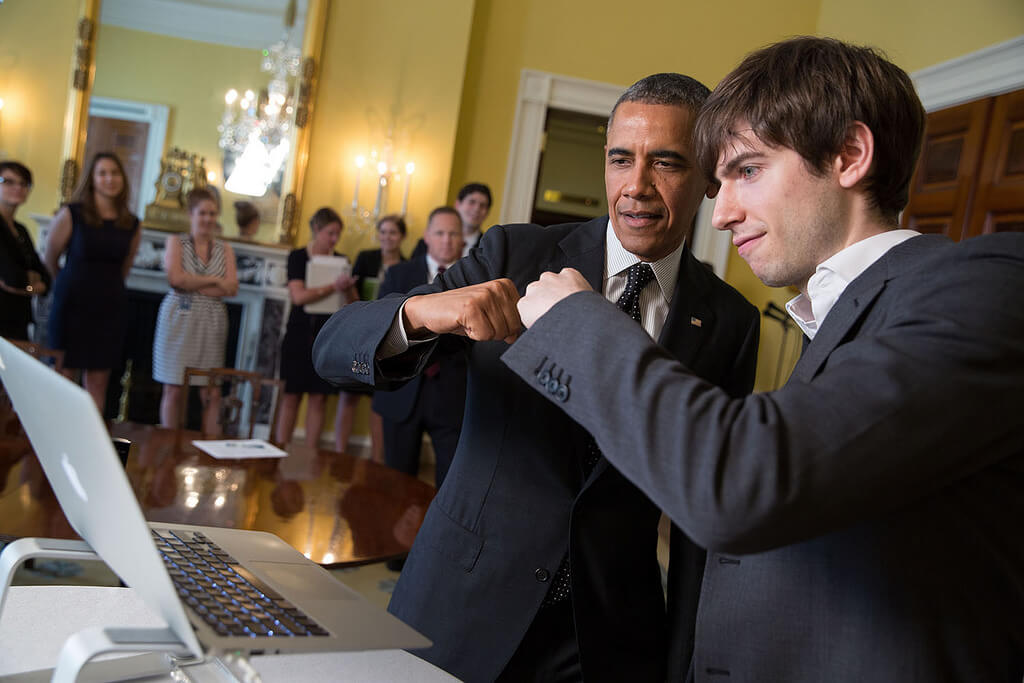
We and our third-party partners (such as Meta and Google) use cookies and similar technologies on this website to collect information about you to operate and improve the website, run analytics to better understand our audience, and show you personalized content and advertising. By clicking “Accept” you consent to our use of cookies.
One of President Obama’s top initiatives in office was delivering better digital services to the American people. Furthermore, President Obama and his administration sought to provide the American people with a multitude of ways to engage with their government. He fervently believes in unlocking the power of government data to spur innovation across our Nation and improve the quality of services for the American people.
On his first full day in office, President Obama issued the “Transparency and Open Government” memorandum, making clear that his Administration was “committed to creating an unprecedented level of openness,” and fostering a sense of transparency, public participation, and collaboration amongst the government and the American people.
Since 2009, the Administration made significant progress opening up data sets that have never before been public, and creating new pathways to civic engagement. Today, students are able to compare the cost of college with other significant data points, such as graduation rates and average salaries of graduates to determine where to get the most bang for their buck. Communities can map demographic, income, and school data to promote Fair Housing. Patients can find information on the safety and cost of hospitals, nursing homes, and physicians, empowering them to make smarter health care choices. These diverse tools benefit different groups of people, industries, and communities, yet all rely on one thing: open data.
President Obama and Tumblr founder and CEO David Karp share a fist bump as they record a GIF in the Old Family Dining Room, prior to a Tumblr Q&A at the White House, June 10, 2014. (Courtesy Barack Obama Presidential Library)
“ Government should be collaborative. Collaboration actively engages Americans in the work of their Government.”
Search over 166,944 datasets on topics such as Agriculture, Climate, Education, Health, Local Government, Manufacturing, or Science & Research.
June 24, 2011
President Obama’s National Robotics Initiative is part of a broader effort to promote a renaissance of American manufacturing through the Advanced Manufacturing Partnership. This initiative focuses on developing robots that work with or beside people to extend or augment human capabilities, taking advantage of the different strengths of humans and robots. As part of this initiative, the National Science Foundation, the National Institutes of Health, NASA, and the Department of Agriculture are funding $70 million of research for next-generation robotics.
“During photo lines, there’s this routine called ‘push and pull.’ One social aide helps push the next guest towards the President and another helps pull them out of the room. During a photo line to commemorate the 25th anniversary of the Americans With Disabilities Act, Alice Wong, Disability Visibility Project Founder, participated via robot. So after her photograph had been taken, social aides gestured to ‘pull’ her out of the room as the next guest entered.” July 20, 2015 (Courtesy Barack Obama Presidential Library)
May 23, 2012
The Presidential Innovation Fellows (PIF) program brings the principles, values, and practices of the innovation economy into government through the most effective agents of change we know: our people. This highly-competitive program pairs talented, diverse technologists and innovators with top civil-servants and change-makers working at the highest levels of the federal government to tackle some our nation’s biggest challenges. These teams of government experts and private-sector doers take a user-centric approach to issues at the intersection of people, processes, products, and policy to achieve lasting impact.
President Barack Obama meets with Presidential Innovation Fellows in the Roosevelt Room of the White House, Jan. 25, 2013. (Courtesy Barack Obama Presidential Library).
On August 17, 2015 President Obama made the Presidential Innovation Fellows program permanent. He noted that to-date fellows have helped,
Veterans access care and benefits more easily,
Families have greater access to their electronic medical records,
Police departments make their data searchable online, and
Students gain access to high speed internet in school.
“ We must harness new ideas and technology to remake our government…”
August 11, 2014
Formally launched by the Administration on August 11, 2014, the U.S. Digital Service is a small team of our country’s brightest digital talent that will work with government agencies to find more effective ways to use technology to improve the service, information, and benefits they provide.
President Barack Obama shares a laugh with participants prior to an Affordable Care Act implementation meeting with Vice President Joe Biden in the Roosevelt Room of the White House, Sept. 22, 2014. (Courtesy Barack Obama Presidential Library).
“ …what we realized was that we could potentially build a SWAT team, a world-class technology office inside of the government that was helping agencies. We’ve dubbed that the U.S. Digital Service…they are making an enormous difference…”
October 22, 2014
President Obama believed climate education and literacy are particularly important for building a 21st-century workforce, where tomorrow’s community leaders, city planners, and entrepreneurs have the information, knowledge, and training to make sound decisions and grow businesses in the context of a changing climate.
He launched the Climate Education and Literacy Initiative to ensure that all students and citizens have the knowledge and training they need to address the climate change challenge. The Initiative ensured that citizens of all ages have a solid grounding in science, technology, engineering, and math (STEM) skills that serve as a basis for discovery, invention, and innovation.
“This photograph was from the annual White House Science Fair. It shows the President posing with Girl Scout Troop 2612 from Tulsa, Oklahoma. I think the eight-year-old girls–Avery Dodson, Natalie Hurley, Miriam Schaffer, Claire Winton and Lucy Claire Sharp–are called ‘Brownies’. They had just shown the President their exhibit: a Lego flood proof bridge project. The fair celebrated the student winners of a broad range of science, technology, engineering and math (STEM) competitions from across the country.” (Courtesy Barack Obama Presidential Library)
Recent events in Ferguson, Missouri and around the country have grabbed the attention of the nation and the world, and have highlighted the importance of strong, collaborative relationships between local police and the communities that they protect.
On December 1, 2014, the Administration announced new steps they took to strengthen the relationships between law enforcement agencies and the communities they are obligated to protect and serve, including:
Advancing the use of body worn cameras and promoting proven community policing initiatives
Creating a new task force to promote expansion of the community-oriented policing model, which encourages strong relationships between law enforcement and the communities that they serve as a proven method of fighting crime
Reforming how the federal government equips state and local law enforcement – particularly with military-style equipment
“The President talks with students and law enforcement officials about community relations and programs that build trust between youth and the police in Camden, N.J. Earlier that day, we had toured police headquarters with the Chief of Police J. Scott Thomson. Several months later I was giving some friends a tour of the West Wing when I ran into Chief Thomson, who was on the same tour with another White House employee, and I told him how much the visit to Camden had meant to the President.” (Courtesy Barack Obama Presidential Library).
Visit: The COPS Office, a national effort to implement the President’s Task Force on 21st Century Policing Report recommendations (Opens in a new tab)
January 20, 2015
In his 2015 State of the Union address, President Obama announced that he’s launching the Precision Medicine Initiative — a bold new research effort to revolutionize how we improve health and treat disease.
Until now, most medical treatments have been designed for the “average patient.” As a result of this “one-size-fits-all” approach, treatments can be very successful for some patients but not for others. Precision Medicine, on the other hand, is an innovative approach that takes into account individual differences in people’s genes, environments, and lifestyles. It gives medical professionals the resources they need to target the specific treatments of the illnesses we encounter, further develops our scientific and medical research, and keeps our families healthier.
First Lady Michelle Obama joins children for a group photo during a visit to St. Jude Children’s Research Hospital in Memphis, Tenn., Sept. 17, 2014. (Courtesy Barack Obama Presidential Library)
President Obama is the first “social media president”: the first to have @POTUS on Twitter, the first to go live on Facebook from the Oval Office, the first to answer questions from citizens on YouTube, the first to use a filter on Snapchat. Over the past eight years, the President, Vice President, First Lady, and the White House have used social media and technology to engage with people around the country and the world on the most important issues of our time (while having some fun along the way).
President Barack Obama looks at a selfie taken with restaurant staff at Charmington’s cafe in North Baltimore, Md., Jan. 15, 2015. (Courtesy Barack Obama Presidential Library)
President Obama supported the FCC’s “net neutrality” decision to adopt the strongest rules possible to ensure Internet Service Providers (ISPs) cannot become gatekeepers to the Internet’s content or create paid fast lanes for access to the best services.
October 3, 2016
In March 2016, President Obama traveled to South by Southwest® for a conversation on civic engagement. In Austin, he called on creative thinkers and entrepreneurs from across the country to help tackle our toughest challenges. On October 3, 2016, we celebrated that spirit of innovation at South by South Lawn, a White House festival of ideas, art, and action.
At SXSL, we celebrated the inspiring work that so many Americans have already accomplished—called on everyone to roll up their sleeves and discover their own way to make a positive difference in our country.
The Lumineers perform during the South by South Lawn event on the South Lawn of the White House, Oct. 3, 2016. (Courtesy Barack Obama Presidential Library)
1/4
President Barack Obama joins Leonardo DiCaprio and Dr. Katharine Hayhoe for a discussion on climate change during the South by South Lawn event on the South Lawn of the White House, Oct. 3, 2016. (Courtesy Barack Obama Presidential Library)
2/4
President Barack Obama sits with a Lego statue during preparations for the South by South Lawn event on the South Lawn of the White House, Oct. 3, 2016. (Courtesy Barack Obama Presidential Library)
3/4
President Barack Obama joins a discussion on climate change during the South by South Lawn event on the South Lawn of the White House, Oct. 3, 2016. (Courtesy Barack Obama Presidential Library)
4/4
October 12, 2016
President Obama traveled to South by Southwest in March 2016 — the first sitting President to do so. In Austin, he made the case for people “from all walks of life, working inside or outside of government, to help us make this democracy even stronger.”
When it comes to tech, the President has had many firsts: the first “Social Media President;” the first President to appoint a Chief Technology Officer; the first President whose White House had built an online civic engagement platform, We The People; the first President with his own tech startups in the United States Digital Service (USDS), 18F, and the Presidential Innovation Fellows. But this Administration’s use of technology is not about novelty. Instead it is rooted in the President’s broader vision about citizenship and service.
President Barack Obama fist bumps a middle-school student participating in an “Hour of Code” event to honor Computer Science Education Week in the Eisenhower Executive Office Building, Dec. 8, 2014. (Courtesy Barack Obama Presidential Library)
In the November 2016 issue of WIRED, guest-editor President Obama explored the theme of “Frontiers” that will shape the coming decades.
Watch: President Barack Obama’s Keynote Conversation at SXSW Interactive (Opens in a new tab)
Watch: President Barack Obama focuses on the future and the next hurdles that humanity will need to overcome to move forward. (Opens in a new tab)
Browse the story of President Obama’s administration and the Obama family’s time in the White House.
We need your help to turn hope into action—to inspire, empower, and connect people to change their world.
The Obama Foundation Shop (Opens in a new tab)
The Obama Foundation is a nonpartisan 501(c)(3) nonprofit organization on a mission to inspire, empower, and connect people to change their world. Read More about our tax-exempt status.
Tech News
Mechanical Engineering Outstanding Senior 2024: Spencer Macturk – Virginia Tech

Alex Parrish
view all
view all
view all
view all
view all
Virginia Tech demonstrates impact as a global land grant – progressing sustainability in our community, through the Commonwealth of Virginia, and around the world.
Get Directions
See All Locations
Contact Virginia Tech
For the media
© 2024 Virginia Polytechnic Institute and State University. All rights reserved.
Tech News
Biden administration taps tech CEOs for AI safety, security board – NBC News
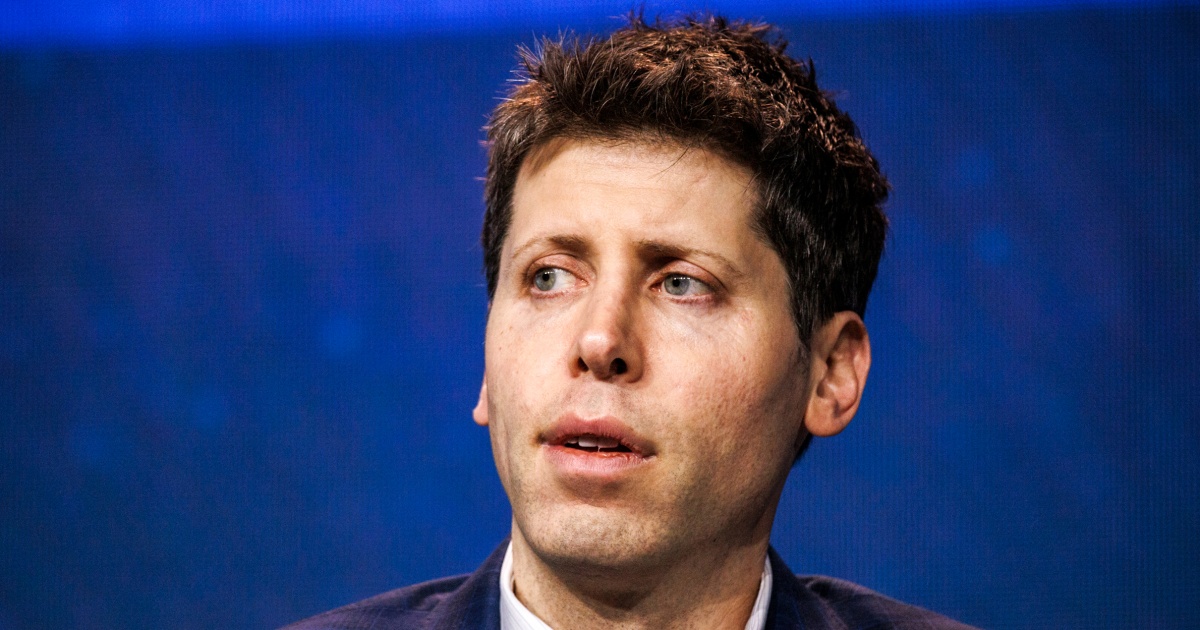
Profile
Sections
tv
Featured
More From NBC
Follow NBC News
There are no new alerts at this time
The Department of Homeland Security established an advisory panel Friday to study how to protect critical infrastructure including power grids and airports from threats related to artificial intelligence.
The Artificial Intelligence Safety and Security Board, which has 22 initial members, includes high-profile figures in tech like OpenAI CEO Sam Altman, Microsoft CEO and chairman Satya Nadella and Alphabet CEO Sundar Pichai, according to a statement from the DHS.
President Joe Biden ordered the creation of the board in October when he signed a wide-ranging executive order on AI, representing the federal government’s first foray into trying to regulate the technology since advanced AI apps including OpenAI’s ChatGPT went viral in popularity.
The board’s mission includes developing recommendations “to prevent and prepare for AI-related disruptions to critical services that impact national or economic security, public health, or safety.”
AI experts have identified a wide array of potential security threats that the new technology could make possible, from swarms of autonomous drones to cheap and lethal bioweapons to more effective hacking threats against critical computer systems.
The government’s defense may involve using AI to fight AI, the DHS said.
“The Board will develop recommendations to help critical infrastructure stakeholders, such as transportation service providers, pipeline and power grid operators, and internet service providers, more responsibly leverage AI technologies,” the department said.
Homeland Security Secretary Alejandro Mayorkas said in a statement that AI “can advance our national interests in unprecedented ways” but that it also “presents real risks — risks that we can mitigate by adopting best practices and taking other studied, concrete actions.”
In addition to tech CEOs, the board includes the CEOs of Delta Air Lines, defense contractor Northrop Grumman and oil producer Occidental Petroleum, as well as Maryland’s Democratic Gov. Wes Moore, Seattle Mayor Bruce Harrell and the leaders of two civil rights organizations.
David Ingram covers tech for NBC News.
© 2024 NBC UNIVERSAL
-
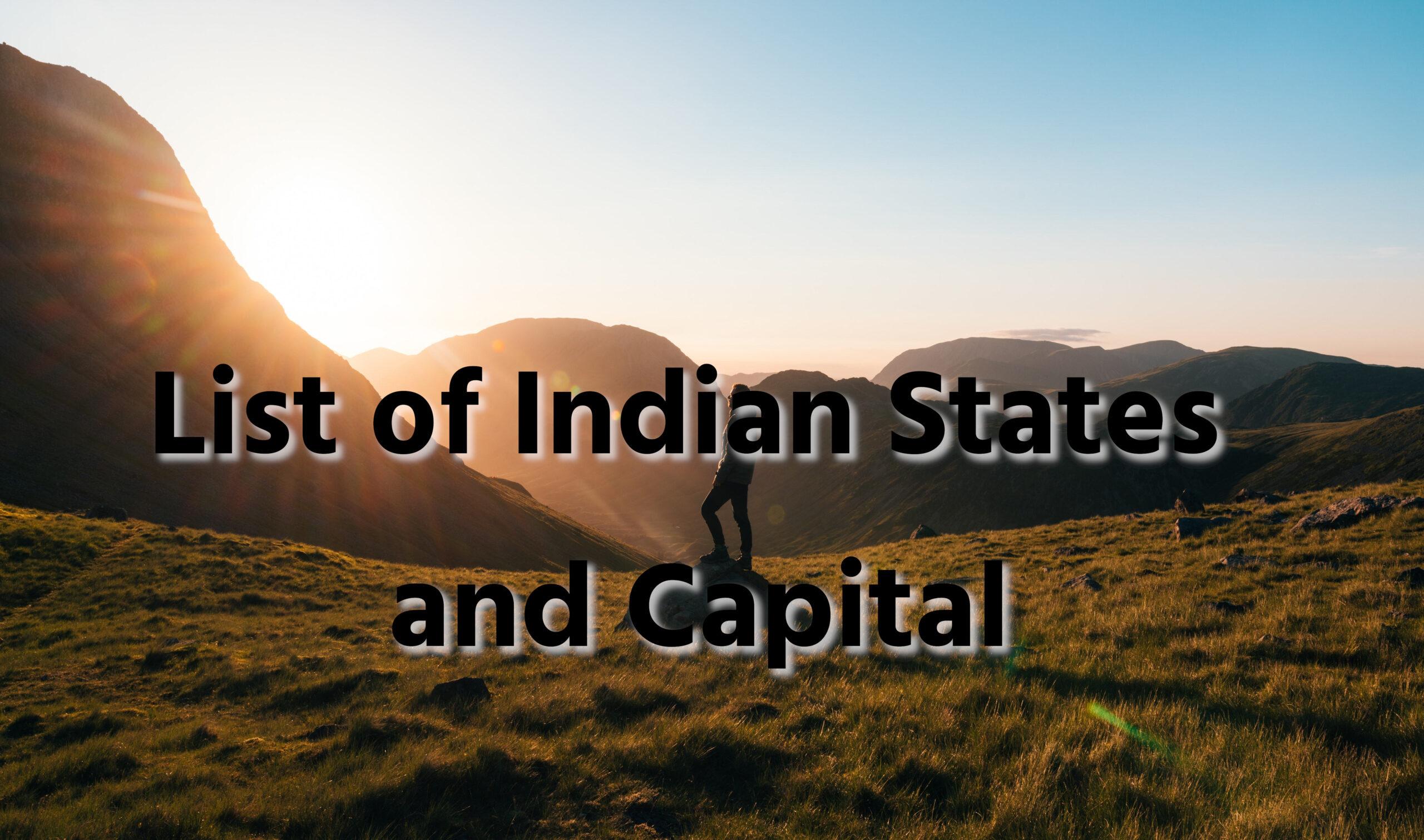
 General Knowledge2 years ago
General Knowledge2 years agoList of Indian States and Capital
-

 General Knowledge2 years ago
General Knowledge2 years agoList Of 400 Famous Books and Authors
-

 Important Days4 years ago
Important Days4 years agoImportant Days of Each Month
-

 General Knowledge2 years ago
General Knowledge2 years agoCountries and their National Sports
-

 General Knowledge3 years ago
General Knowledge3 years agoCountry Capital and Currency
-

 Important Days3 years ago
Important Days3 years agoHoli
-
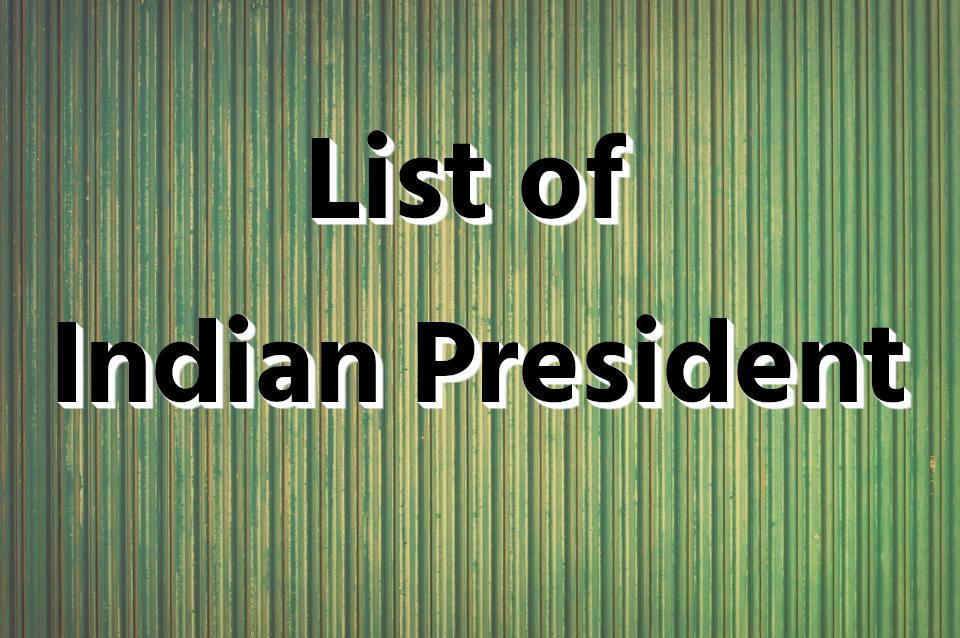
 General Knowledge2 years ago
General Knowledge2 years agoList of Indian President
-
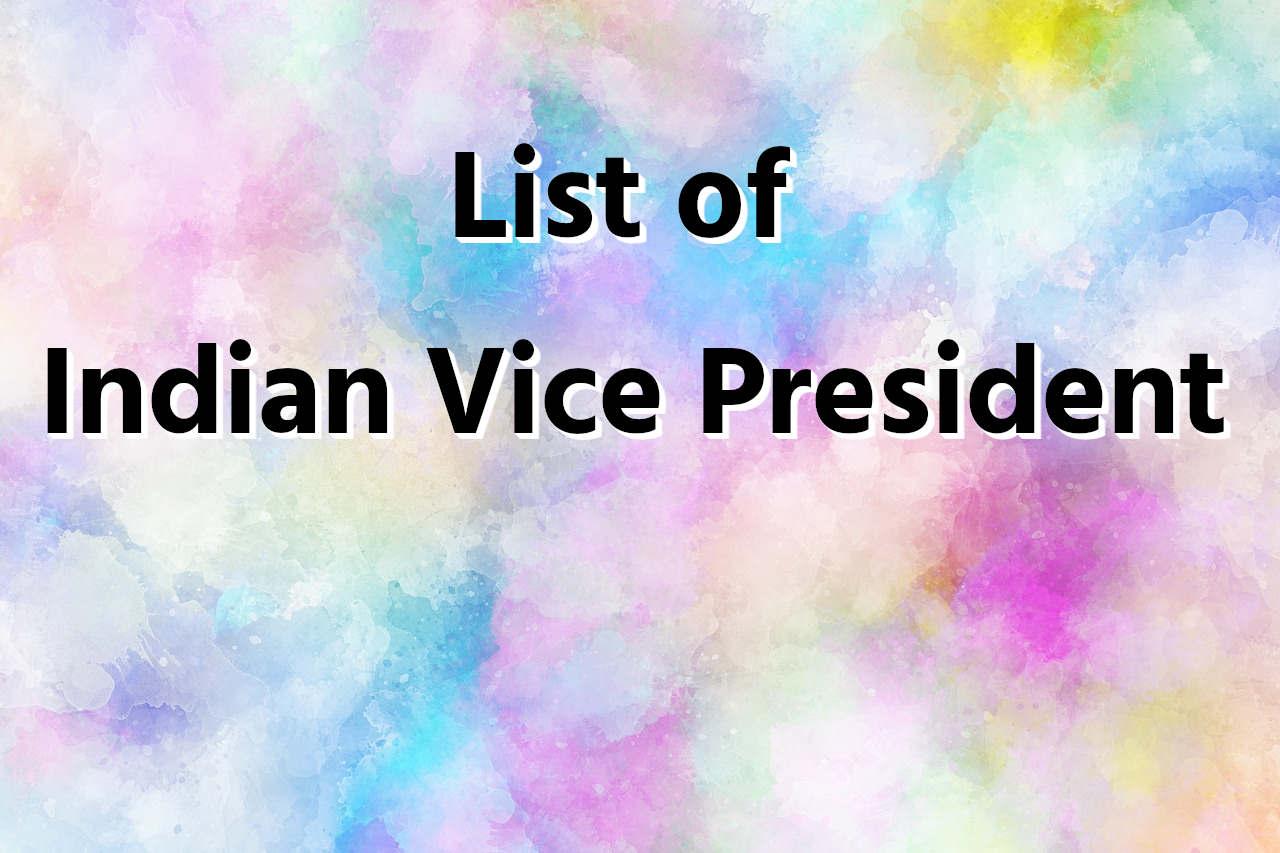
 General Knowledge2 years ago
General Knowledge2 years agoList of Indian Vice President


